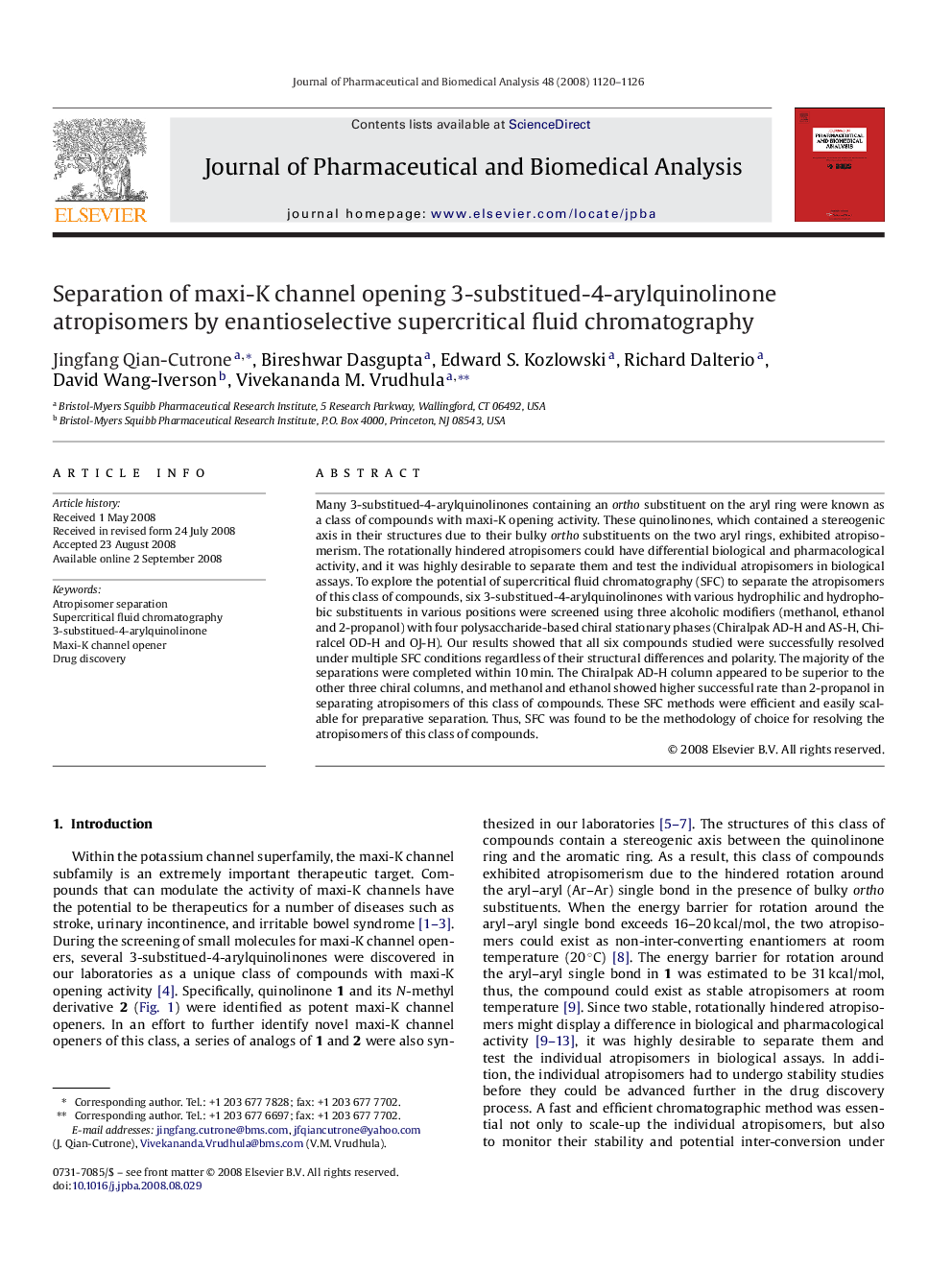| Article ID | Journal | Published Year | Pages | File Type |
|---|---|---|---|---|
| 1222520 | Journal of Pharmaceutical and Biomedical Analysis | 2008 | 7 Pages |
Many 3-substitued-4-arylquinolinones containing an ortho substituent on the aryl ring were known as a class of compounds with maxi-K opening activity. These quinolinones, which contained a stereogenic axis in their structures due to their bulky ortho substituents on the two aryl rings, exhibited atropisomerism. The rotationally hindered atropisomers could have differential biological and pharmacological activity, and it was highly desirable to separate them and test the individual atropisomers in biological assays. To explore the potential of supercritical fluid chromatography (SFC) to separate the atropisomers of this class of compounds, six 3-substitued-4-arylquinolinones with various hydrophilic and hydrophobic substituents in various positions were screened using three alcoholic modifiers (methanol, ethanol and 2-propanol) with four polysaccharide-based chiral stationary phases (Chiralpak AD-H and AS-H, Chiralcel OD-H and OJ-H). Our results showed that all six compounds studied were successfully resolved under multiple SFC conditions regardless of their structural differences and polarity. The majority of the separations were completed within 10 min. The Chiralpak AD-H column appeared to be superior to the other three chiral columns, and methanol and ethanol showed higher successful rate than 2-propanol in separating atropisomers of this class of compounds. These SFC methods were efficient and easily scalable for preparative separation. Thus, SFC was found to be the methodology of choice for resolving the atropisomers of this class of compounds.
